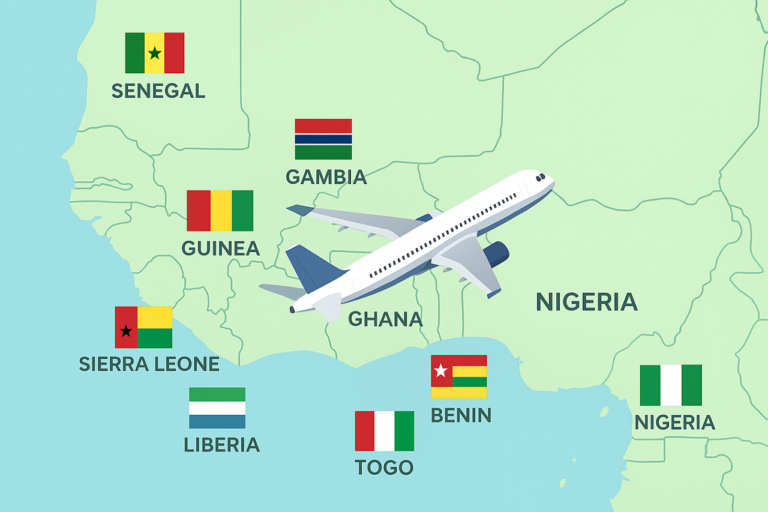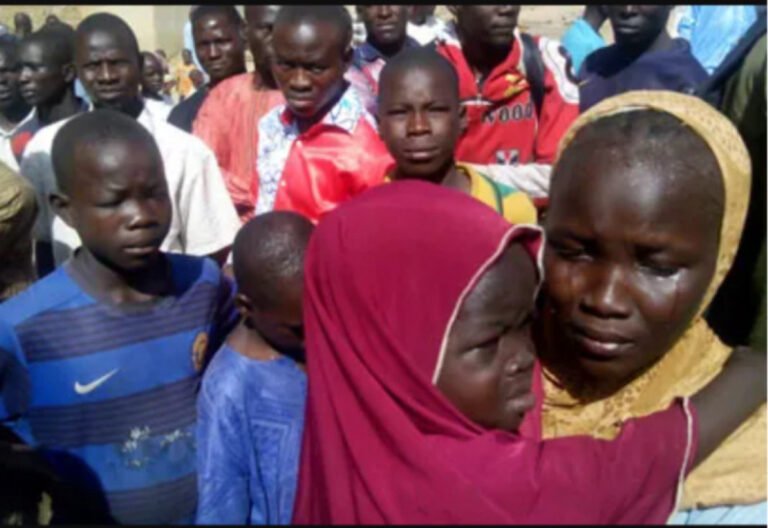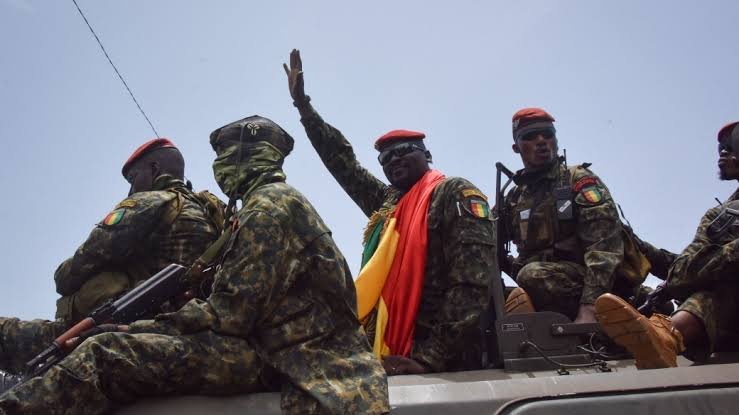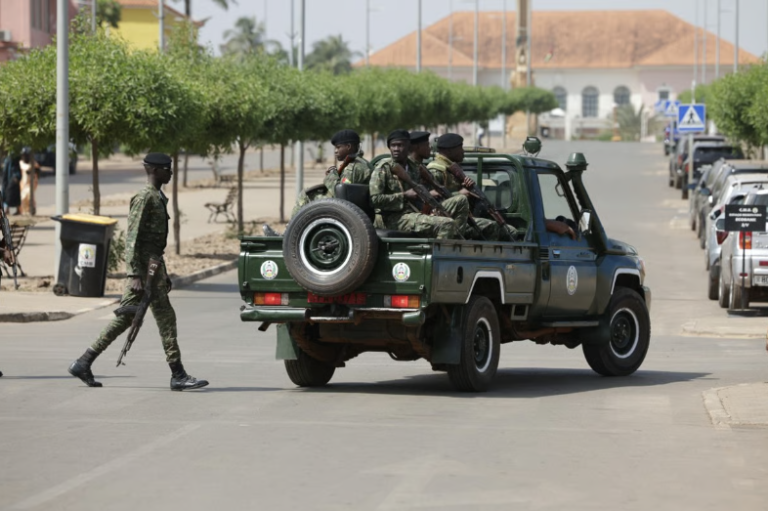By Qosim Suleiman, Abdullah Tijani, Amma Moussa & Gaston Sawadogo
(This is the final part of this two-part series. You can read the first part here.)
This story was supported by the Pulitzer Center.
A Great Wall, but not here
From Nigeria to Niger and Burkina Faso, the same problem exists: Conflict and insurgency are stalling or reversing the implementation of the Great Green Wall project.
The green area is the GGW corridor passing through these communities. The boxes are areas divided into an 18-kilometre grid to cover a significant proportion of each GGW corridor in each local government.
A GIS investigation tracked tree population changes across a standardised 18 by 18 km grid covering the GGW corridor (parts of the green area on the map) in selected communities in Nigeria, Niger and Burkina Faso, comparing data from project initiation in 2007 to recent periods, up to 2025. Data reveals an extensive presence of insurgents across 24 of 30 locations surveyed, with three locations showing the possibility of the presence of insurgents.
This widespread insecurity led to community displacement, with 18 locations experiencing confirmed abandonment by locals, and an additional 8 locations showing likely abandonment or partial exodus.
Niger plays a crucial role in the Great Green Wall initiative, primarily due to its central location within the Sahel and the extent of environmental degradation it experiences. The UN Food and Agriculture Organisation says the country remains one of the world’s poorest, with 80 per cent of its population relying on rain-fed agriculture. Unfortunately, nearly 75 per cent of Niger’s land is classified as desert, and the country loses 100,000 hectares of arable land every year to desertification.
The World Bank says the Great Green Wall would help “restore 3.2 million hectares of degraded land” and “ensure food security” in Niger.
But environmental groups say those numbers now tell only part of the story. Insecurity has added a new, often insurmountable layer, making forest restoration difficult. For instance, in Banizoumbou, Niamey region, a village near the Malian border in Tillaberi, the Niamey Tree Initiative launched a 10-hectare volunteer programme to teach women and young people how to restore degraded land through Assisted Natural Regeneration (ANR).
“Everything was ready,” said Mr Moumouni, the Niger-based director of environmental nonprofit L’Initiative pour l’Arbre. But by April, armed groups moved in nearby, and villagers fled the area. “We couldn’t deploy a single team,” he lamented.
According to the UN Refugee Agency, armed violence displaced at least 240,000 people in Diffa alone as of 2017, and the number has since risen. Many were farmers and herders who would have been helpful to the long-term care of reforested zones.
The situation is palpable in places like Chetemari and N’Gagam in the Diffa region, where the Youth Association for the Protection of the Environment (AJUPE) once led vibrant tree-planting campaigns.
“We can’t go back,” said Abdoul Aziz Mohamed, AJUPE’s president. “Even if we want to go, we must hire military escorts. The cost of one escort is more than our entire seedling budget.”
Meanwhile, in an ideal setting, after initial planting, NGOs would revisit the sites, track growth, replace lost saplings, and train locals in land stewardship.
Mr Mohamed worries that projects that once aimed to rehabilitate ecosystems and provide community food gardens are abandoned or forgotten in insecure places. He said many young plants are withering away in areas in Diffa and Tillaberi, and dunes have already re-engaged land previously reclaimed.
Planted, then withered
A detailed satellite assessment shows that vast swaths of Niger’s agricultural frontier have shifted into ecological decline. The worst-hit areas span the southern fringes of Tahoua, central Tillabéri, and the western belt of Maradi, where over 2.5 million hectares of arable land have slowly turned to sand due to climate change, overgrazing, and deforestation.
However, the GIS data also reveals that despite security setbacks, Niger made promising headway in some zones. Satellite imagery confirms evidence of land regeneration across parts of Dosso and Zinder, where traditional agroforestry techniques, such as Farmer-Managed Natural Regeneration (FMNR), have helped restore over five million hectares of degraded land. This restoration corresponds with the growth of approximately 15 million trees, marking a significant achievement in landscape rehabilitation efforts.
Withering plants in Niger Republic
However, the glory of these gains is increasingly under threat. Armed conflict has appeared to erase years of progress in northern Tahoua and western Tillabéri, a GIS investigation confirmed. Satellite layers updated through 2020 show that nearly 1.8 million hectares of previously rehabilitated land in these conflict-affected regions now show little to no vegetative growth.
The GIS timeline further paints a story of stalled momentum. From 2010 to 2015, Niger showed a steady increase in landscape restoration, with an annual average expansion of roughly 400,000 hectares of rehabilitated land. However, from 2016 onward, coinciding with the intensification of jihadist insurgencies in the tri-border region, these green shoots disappear from the map. In satellite layers updated through 2020, large portions of previously active sites in Tillabéri no longer show vegetative growth, showing how conflict has directly reversed environmental gains.
However, while insecurity has contributed immensely to the decline of trees planted in the areas meant for the Great Green Wall, anthropogenic activities have significantly damaged forest regeneration efforts. For instance, in Tillabéri’s Filingué town, once dotted with hardy acacia groves and scattered baobabs, the trees vanish quietly, cartload by cartload. With security forces unable to patrol the region’s outskirts due to rising terrorist attacks, the forests have become open ground.
“We cut wood at night,” one logger admitted, “and return when no one’s watching.” The region’s environmental office estimates that over 3,000 trees of all species are felled annually in the Filingué town alone, with the ground stripped clean, and the roots exposed like broken ribs.
This local reality is mirrored in national data. In 2020, Tillabéri still held 12.6 thousand hectares of natural forest, covering 0.14 per cent of its land area. But by 2024, it had lost four hectares, contributing to an estimated 797 tonnes of CO₂ emissions, according to Global Forest Watch.
To the east in Diffa, refugees fleeing Boko Haram violence in northeastern Nigeria have poured into this region, seeking shelter in camps or makeshift villages. But survival in the semi-desert region comes with consequences. For warmth, food, shelter, and income, the displaced populations have turned to the nearest available resource: trees. For areas that used to blossom with leaves and are occupied by trees, walking for nearly a kilometre in some places is now possible without spotting a single upright tree.
“We don’t even know how many have been cut,” said Moussa Bagana, a researcher at the University of Diffa. “But you see how trees were shaved to the stump and whole woodlands erased.” He noted the ecological cost in such arid zones is disproportionately severe, especially when the trees cut are slow-growing desert survivors.
Mai Moussa Chetima Bagana, a researcher at the University of Diff, Niger Republic
Species like Balanites aegyptiaca, locally known as Aduwa, and Bauhinia tortuosa are especially affected. These were once widespread across the Sahel but have become scarce in areas around Diffa’s refugee settlements. “These species were already struggling from overuse and weak regrowth,” Mr Bagana explained. “Add conflict displacement and extreme climate stress, and they’ve nearly disappeared.”
The disappearance of trees in Niger is not a recent phenomenon. It is a slow erosion that has unfolded over more than two decades. From 2000 to 2020, the Diffa region lost an estimated 578 hectares of tree cover, a 52 per cent reduction, according to regional analysis from Global Forest Watch. Also, a review of satellite imagery from 2016 to 2020 shows massive declines in vegetation density. In Filingué, over 50,000 hectares show significant canopy reduction; in Diffa, tree cover has thinned by nearly 20 per cent. The satellite images on regeneration maps that once glowed green about a decade ago reflect bare sand and dying scrub.
These regional declines are part of a national pattern. Between 2001 and 2024, a Global Forest Watch’s analysis shows that Niger lost one hectare of detectable tree cover, representing a 55 per cent decline from its 2000 baseline. Thus, it emitted over 1,040 kilogrammes (1.04 tonnes) of carbon dioxide equivalent (CO₂e). The country released more than a metric tonne of heat-trapping carbon into the atmosphere, roughly the same as burning over 400 litres of gasoline. And just three regions: Tillabéry, Dosso, and Diffa, account for nearly 60 per cent of all recorded tree cover loss in the country.
While AU’s GGW initiative is commendable in theory, Niger’s environmentalists believe the dysfunctional institutional structure, in addition to insecurity, is the greatest obstacle to its success.
But the stories of insecurity and abandonment are only part of the problem. Beneath the surface lies another troubling layer: misplaced priorities and questionable budgeting that have plagued the agency charged with greening the drylands.
The bureaucracy failing the forests
A review of Nigerian budget documents reveals the National Agency for the Great Green Wall (NAGGW) received nearly ₦5 billion from the federal government last year. Yet, less than 10 per cent of that—about ₦372 million—went toward planting trees. Most funds flowed into unrelated projects: solar street lights, classrooms, and road construction. A disproportionate number of those projects landed in Yobe State, the home state of the current and former agency directors. One curious line item allocated ₦25 million for streetlights in far-away Kubwa, a quiet suburb of Abuja, hundreds of kilometres away from GGW project sites in Nigeria.
This year, the agency’s budget surged to ₦21.9 billion. While spending on tree planting increased slightly, misaligned expenditures persisted. The agency earmarked over ₦4 billion for roads, solar infrastructure, and youth sporting equipment initiatives only loosely, if at all, connected to environmental restoration. On 2 June, The Liberalist sent a Freedom of Information request to the agency, demanding accountability for the abovementioned concerns. It has not responded to our inquiries, despite acknowledging the FOI a week later.
Environmental justice activists lament the growing disconnect between the Great Green Wall’s vision and its execution. They believe the persistent reallocation of funds and lack of transparency undermine the initiative’s credibility.
That erosion of trust shows up clearly in Gidan Gabas, a small town in Kano State. Officials launched a five-hectare woodlot there with speeches and photo ops. But they failed to provide water. The seedlings withered and died. In other states, like Yobe and Adamawa, farmers have taken over abandoned planting sites to grow crops despite starting the tree planting in the designated sites. The forest never came.
Nigeria’s challenges mirror a broader pattern, where government agencies struggle with limited capacity and misaligned priorities.
Since its creation in 2015, Niger’s national agency for the Great Green Wall has operated with obvious limitations. The agency, established as the coordinating body for all national restoration efforts under the pan-African initiative, lacks both reach and resources. It has no physical presence across Niger’s eight regions and it operates without the technical capacity to track, verify, or consolidate the diverse interventions implemented by NGOs, donor-backed projects, and civil society organisations.
The result is a fragmented response to desertification, driven almost entirely by external actors. Between 2015 and 2019, only 1,780 hectares were reforested through direct national budget allocations. In contrast, the NGO ID-VERT, supported by international donors, alone reclaimed nearly 300 hectares and planted over 120,000 seedlings in Diffa during the 2024–2025 landscape management campaign. ProDAF, a separate donor-funded initiative, reported the development of 150 hectares by planting 1.5 million forest seedlings in the same region between 2018 and 2021.
Earlier data compiled by the national agency show that from 2011 to 2015, approximately 359,530 hectares were restored or reforested. However, these figures, too, largely reflect the cumulative output of decentralised, donor-led interventions, not unified national planning.
Ironically, even with these institutional weaknesses, Niger is considered a continental leader among the other ten countries participating in the Great Green Wall initiative.
Long way to go
Less than half of the project’s goal has been achieved five years before completion. The UN Convention to Combat Desertification (UNCCD) said in a 2020 progress report that the project would need more than $33 billion in additional funding to achieve its 2030 target.
International donors pledged some $19 billion at a 2021 summit, but as of March 2023, only $2.5 billion had come through, with the rest due by the end of 2025, according to the UNCCD.
Last year, the president of the United Nations Summit on Desertification, Alain Donwahi, confirmed what many had already suspected: that the GGW project would miss its 2030 completion goal.
He explained that the project faces substantial challenges, including financing and implementation. “It is an understatement to stress that we are not in line with our common objective to complete by 2030,” said Mr Donwahi.
GIS Investigation by Mansir Muhammed
(This is the final part of this two-part series. You can read the first part here).














